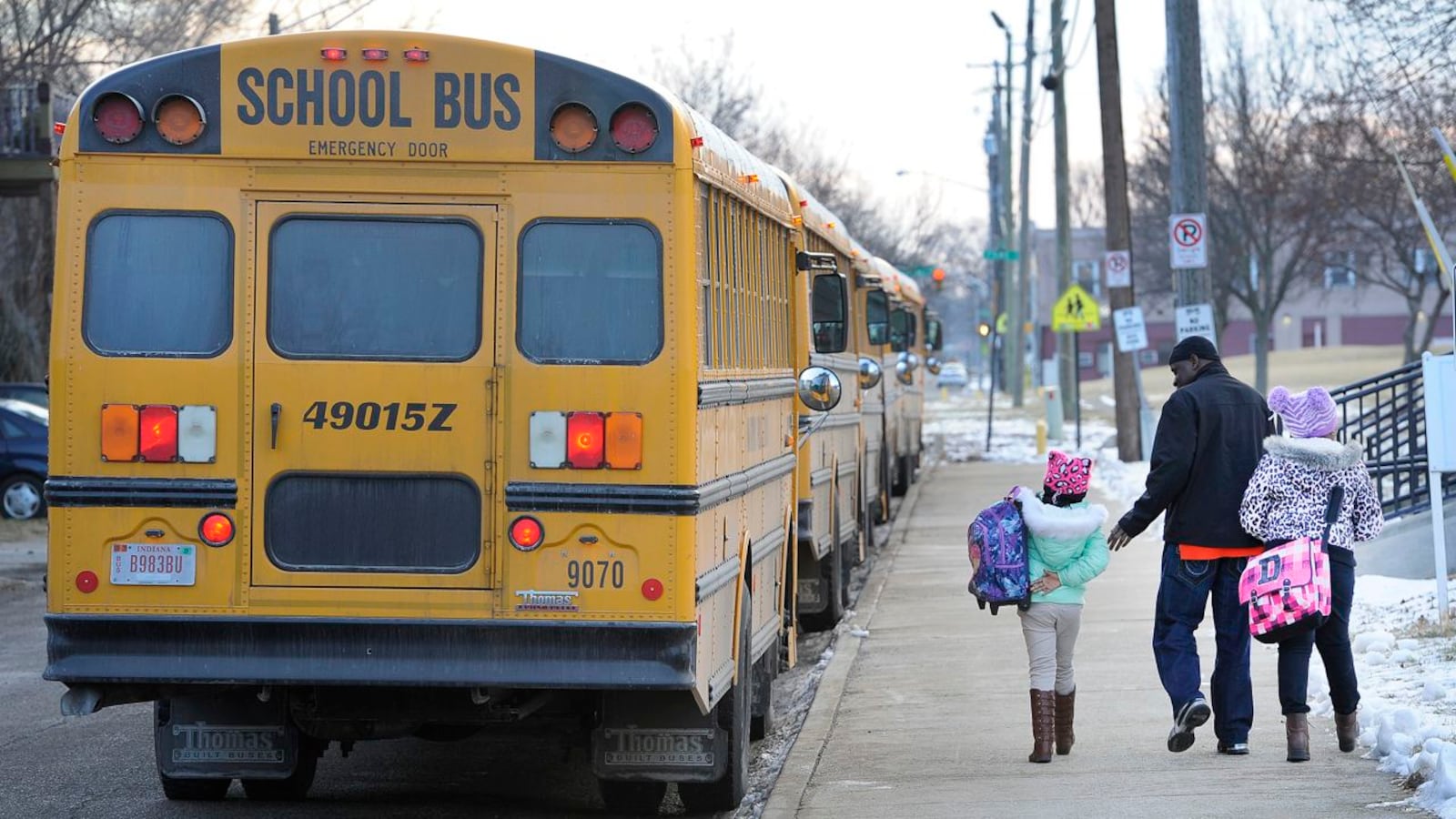Indiana education officials are cautiously moving forward with a plan to send millions of extra dollars to the state’s most struggling schools next year — but how much, and to which schools, caused a contentious debate.
The Indiana State Board of Education is planning to direct more than $6.1 million in federal school improvement funds to schools where the state has intervened because of poor academic performance. Called turnaround academies, they include schools in state takeover as well as those with state-approved partnerships with charter school operators and other intensive supports. The funding, though, is a 6 percent decrease — or nearly $400,000 less — than what was allocated last year.
There are still questions about whether the plan, created by state board staff members, will pass muster under a new federal education law known as the Every Student Succeeds Act, which classifies schools eligible for school improvement funding differently than Indiana has in the past.
Until federal officials sign-off on the funding plan, said state Superintendent Jennifer McCormick, the Indiana Department of Education, which is tasked with handling federal Title I funding, won’t be doling out the extra funds to struggling schools just yet.
“That’s the big unknown right now,” said McCormick, the lone state board member who voted against the plan. “We will submit everything to the feds. As far as the recommendations that came out, until I have it in writing from the feds, we’re on pause … You don’t want the department of education at the state level to willy-nilly distribute federal funds.”
The board’s decision to follow its staff’s recommendations regarding the funding, rather than the education department’s, followed heated arguments between state board staff members and department officials. The two groups couldn’t agree on how much funding the turnaround schools should get — or if some of the schools were eligible to get any extra money at all.
The department said that under the federal ESSA law, schools can only receive the turnaround funds if they are in the lowest 5 percent of all Title I schools, receive an F letter grade from the state or a have a graduation rate of 67 percent or less. Indiana, though, considered Title I schools with F grades and any schools under state intervention to be eligible. It isn’t clear if the federal education department will allow three schools that meet Indiana’s threshold but not ESSA’s to continue receiving the funds.
“I think there are legal questions to still be answered,” said Nathan Williamson, director of Title grants and support for the state.
Also complicating matters, the state received less money from the federal government to give out for school improvement efforts overall — $17.4 million instead of $18.5 million. Plus, more schools are likely to qualify for those grants this year, primarily due to the new way the federal government is requiring the state to classify low-performing schools coupled with a dip in graduation rate. The state will have a final number in October, but department officials said it was probably going to be about 100 more schools, in addition to around 200 last year.
Because of the funding crunch, education department officials wanted to reduce the money sent just to schools under state intervention to $4 million instead of $6.1 million. That way, they said, there would be more leftover so that other low-rated schools that need help — but don’t qualify for state intervention — can apply for potential funds.
“All of them need at least some support,” said Williamson. “Otherwise, we’ll get them some support (when it’s too late), and it’ll be four years later and students, in the meantime, are the ones who suffer.”
But state board staff members argued that Indiana made a commitment to the schools under state intervention, and keeping their funding more consistent with what it has been in the past is the board’s responsibility.
“These are schools that we’re responsible for,” said board member Tony Walker, who represents Northwest Indiana. “How do we deliver a better school back to the district when we’re taking $1 million out from the people running the schools?”
The biggest discrepancy in funding proposals was for Charter Schools USA, the charter company that stepped in to manage three Indianapolis Public Schools when they were taken over by the state in 2011. The state board, which hired CSUSA, suggested maintaining the funding at close to the same rate. But the department of education suggested slashing CSUSA’s funding by $1.8 million for the three schools, in order to direct funds to other struggling schools.
McCormick said the department’s suggestions were based primarily on the number of schools that operators were in charge of. CSUSA, for example, is responsible for three schools. Indianapolis Public Schools, in charge of seven, would have gotten $1.4 million under the department’s plan. (The state board plan has them at $1.2 million.)
State board staff said their recommendations were more aligned with what the turnaround schools had budgeted themselves.


